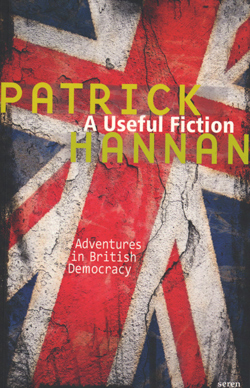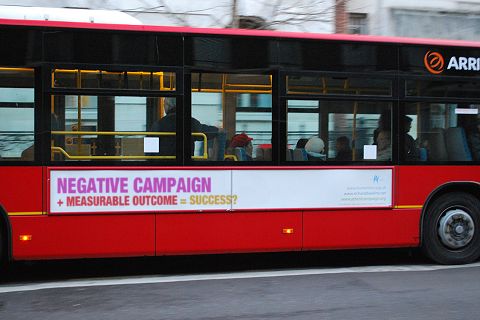A group of us did a free, open event in Aberystwyth on 30th January 2010 called Hacio’r Iaith. It was fun. I learned things. It was based on the BarCamp format. You can use the format to have a conference on any subject and many people do. Some people call it an unconference.
The reasons we organised an offline event should be obvious. A chance to shake hands and consume body aroma content, the only remaining experiences not yet available online.
Around 40 people came. That number seemed about right for a one-day event, I didn’t even get a chance to talk to everyone properly.
One of the main aims was to get people together to talk about shared interests, so on that basis it was almost bound to be a success after the second or third person said they’d come along. When you know people will get talking there is no need for anxiety, even if the wifi access goes down (it was fine actually), the food doesn’t arrive (it did and was splendid – thanks chefs and sponsors!) or the firewall doesn’t allow FTP access (unfortunately it didn’t, but that was a mere glitch and chance to learn something).
Keywords will be in bold here because this is getting long…
The offline component of the event is finished. For a few reasons it’s a pity you can’t access big chunks of the event now. You really had to be there maaan. Saying all that, it’s still open to an extent because we purposefully made it a hybrid of offline and online. Several web-based backchannels existed before and during the meet-up: the event wiki, the group blog, Twitter messages, videos on YouTube and photos/images on Flickr.
These backchannels persist afterwards, which increases the value of doing the event for years to come. That goes for potentially everyone on the web (especially now that Google Translate can get you the gist of the Welsh in several other languages).
These are some of the benefits of the social web. These benefits are seldom discussed by the mainstream media, incidentally!
I want other people to see all this stuff if they search for related things. I know there are other people who attended who want it to have an influence. On that note, not every problem is a problem of information. (That’s the second Neil Postman link in this post. Consider that chin thoroughly stroked.) But some problems are related to information. For instance, taking abundant information and converting it into something useful is something we can step up. It’s something that could benefit Wales, where I live and most of the attendees live.
I’d like to see more BarCamps, unconferences and so on happening in Wales. Incidentally that’s part of the reason why I’ve chosen to write this in English, to give the non-Welsh speaking people in Wales some access to the proceedings. And other people around the world who might be interested.
As far as I know, Hacio’r Iaith on Saturday was the first BarCamp-style event to be conducted in Cymraeg, the Welsh language. The subject matter? Web and technology as it relates to the Welsh language. Those things – language and subject matter – don’t necessarily follow. Naturally people discuss their language in their own language. But a group could organise a BarCamp about any subject and do it in the Welsh language. Absolutely any subject.
For nearly everyone who attended it’s their number one language for everything they do daily and has been for as long as they remember.
I can only talk about the sessions I attended. Everything is from my perspective!
The first session was about tools for Welsh learners, including a website and series of online lessons called Say Something In Welsh build with phpBB, an iPhone application called Learn Welsh and some ideas for mobile app “flashcards” suggested by a tutor. We talked about the conflicting difficulties of making apps available to all mobile users, even if they are web-based apps running on mobile. I asked Aran from Say Something In Welsh a question about open content and search engines. The site is a private “walled garden” for a number of reasons related to maintaining a community of learners, but it’s free to register to join. (UPDATE: See Aran’s comment below for more about this.)
I then stayed for the Metastwnsh podcast recording and live web stream. Metastwnsh is a web and technology blog with several contributors. There was some discussion of gadgets and some jokes. My favourite part was a discussion of how the language choice of our online posts and conversations can differ from that of our offline choice. In particular, Twitter was cited as an example of a tool which first language Welsh speakers sometimes opt to use in English, for many reasons – some understandable. It was suggested that perhaps in some cases they file it under an “English language part of their brain”, alluding to the possibility that bilingual people associate some spaces or platforms with specific languages. So the effect of the platform is not necessarily “neutral”, or doesn’t remain that way. (I’ve been building a list of Welsh speakers on Twitter, including learners. Every person who is on the list can see the list and access all the other members of the list. It’s a way of strengthening the network and thereby, potentially, the impulse to post in the Welsh language should people wish to do so. Linguistic diversity leads to other forms of diversity and improves the internet as a whole in my opinion.)
I popped next door to catch the very end of a presentation about Llen Natur, a website about wildlife and nature. It has a dictionary of species, maps and photos.
Free lunch was not something I had insisted on, especially as it increases the admin for such events. But Rhodri ap Dyfrig was convinced it was possible and fixed up catering and covered it with money from some of the sponsors. For me it was a valuable part of the event, meeting some very talented people I’d only previously known online.
It was my turn next – purely because I’d volunteered to speak, as had everyone. So the title was “FyWordPressCyntaf.com – does dim angen profiad o flaen llaw” (which translates as MyFirstWordPress.com – no previous experience necessary). I wanted to talk about WordPress as a blogging and general site CMS, downloadable from wordpress.org with no coding necessary. It gave me the chance to talk about free software (unambiguously rendered as meddalwedd rydd in Welsh, free software as in freedom) with a bit about how localised code and themes are available for Welsh (but, as I also added, we can always do with more). Unlike the audience, Welsh isn’t my first language so I had a job explaining some of the concepts. I achieved my main objective though, which was to get a bare bones installation of WordPress running to show how quick and easy it can be.
In hindsight it was a little ambitious to shoehorn the mash-up/hack session into the event plan. On the day I ended up putting my talk in the hack session, which came just to mean practical session. Even WordCamp, which I attended last year, was spread over two days – allowing space for team building, pre-planning and the hack session on the second day. At Hacio’r Iaith, I think the initiative and creativity of the attendees to do the hacks could have been there, as well as the capability. But in a day already packed with presentations and to some an unfamiliar format, it became too much to expect. Next time some more practical stuff would be good. I do think a dedicated hack event could work.
We had a quick discussion about making online how-to videos and what subjects to cover. There is plenty of room for how-to videos in Welsh, especially showing non-geeks and normal people how to get the best use of software and the web. The ideas we generated are available to take.
Finally I went to a session on the game Civilization IV and its unofficial Welsh translation, using game mods. Welsh translation of open source games like OpenTTD also came up. I’m not a big gamer but it gave me some ideas…
Video by Sioned Edwards
 Sometimes I feel as if I’m always playing catch-up.
Sometimes I feel as if I’m always playing catch-up.